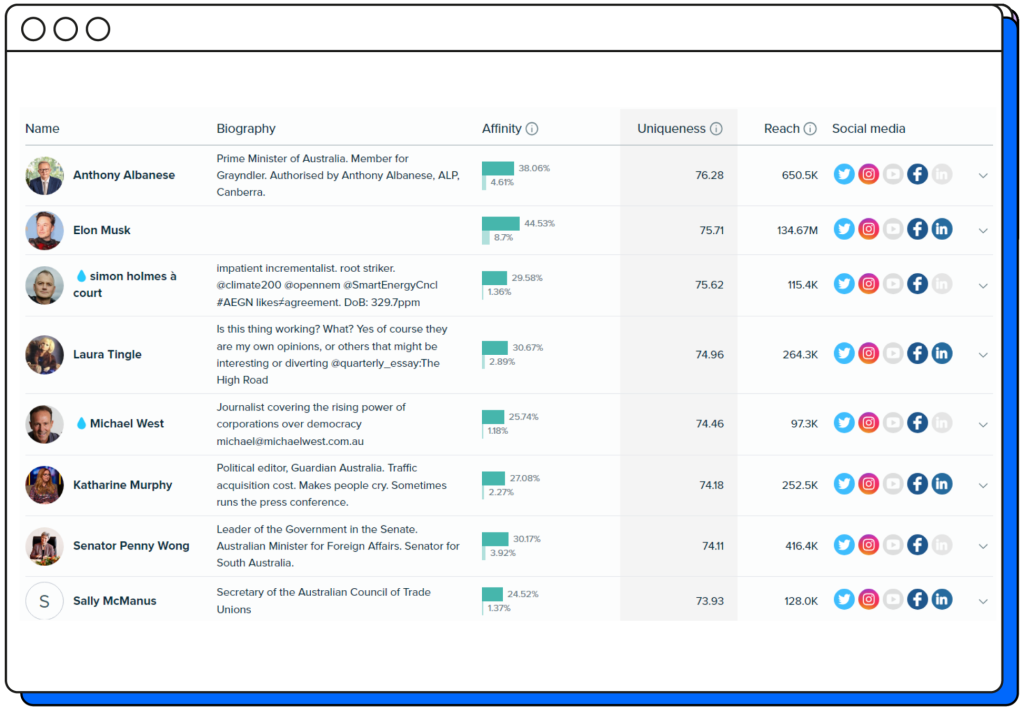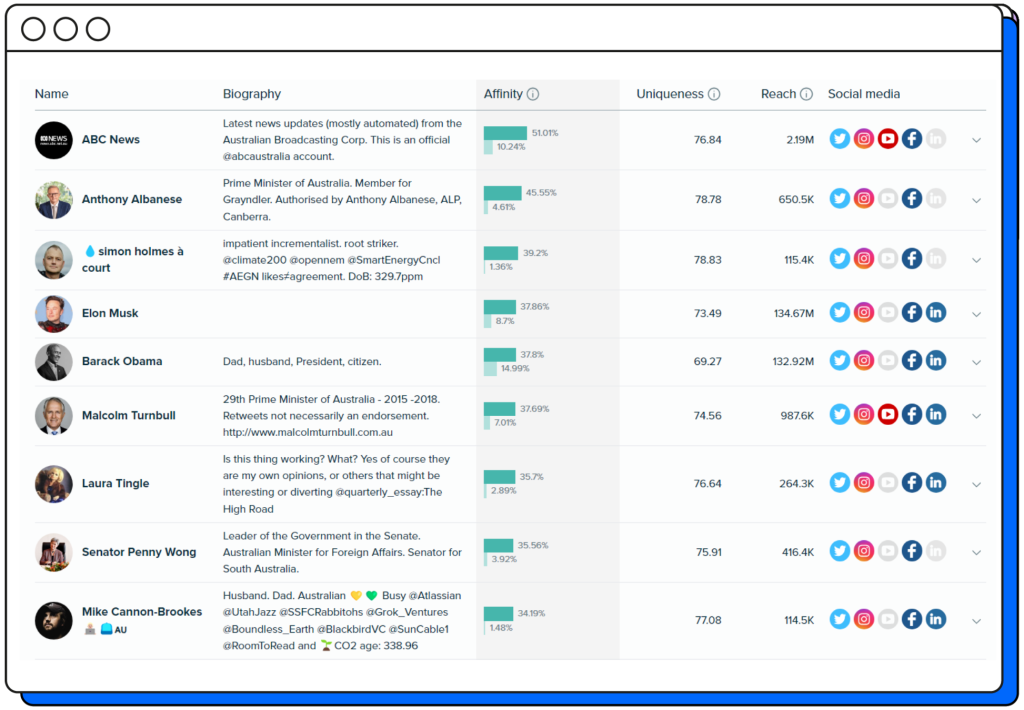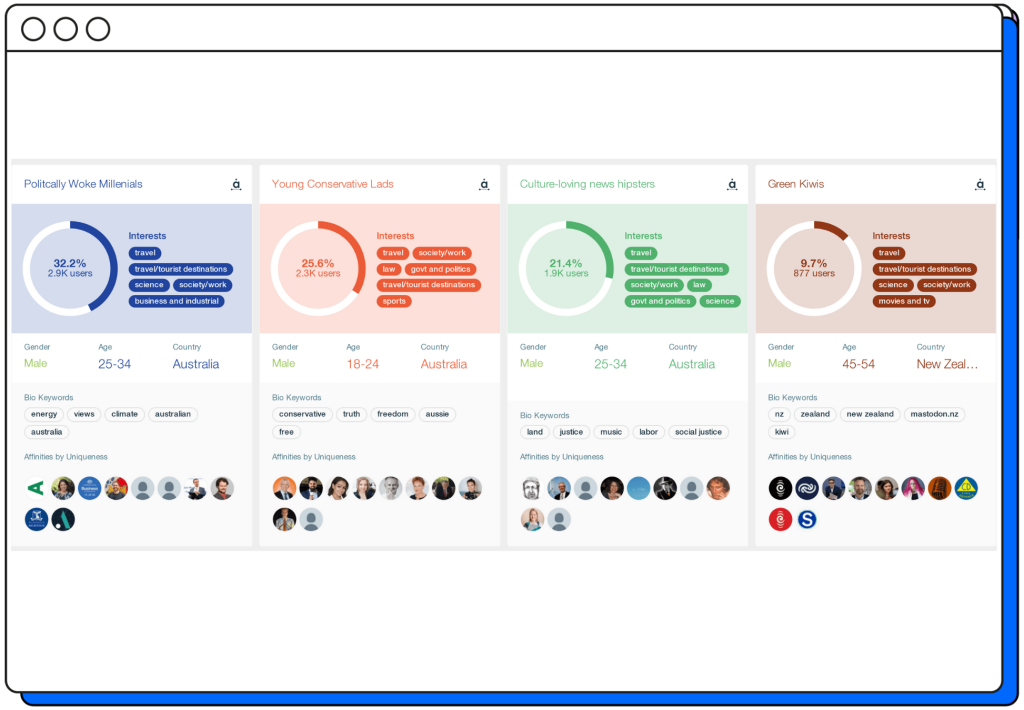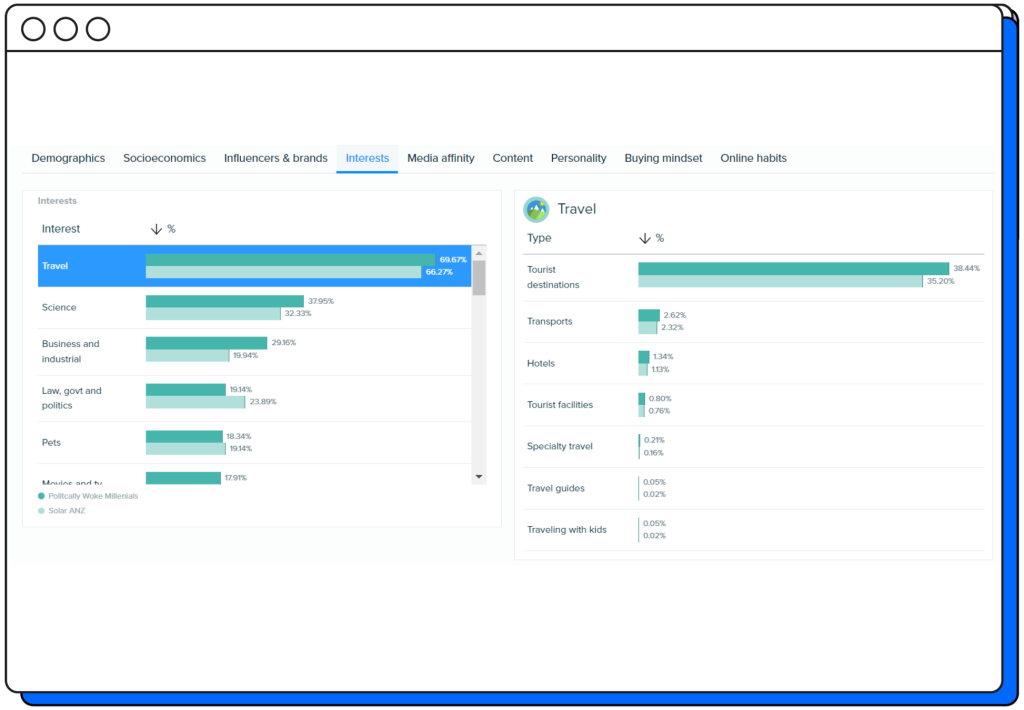
What is market segmentation? A detailed look at segmenting your customer base
- Business Services
Market segmentation is a marketing technique that aims to increase customer response, engagement and brand loyalty through a better understanding of each customer segment, and more efficient targeting. In essence, market segmentation is the process of categorizing a broad market, including both existing and prospective customers, into specific groups, communities, or 'segments.' These are based on shared characteristics such as needs, interests, lifestyles, and demographic profiles, often supplemented by geographic, behavioral, and psychographic attributes.
The aim of market segmentation is threefold: to identify the segments most likely to yield the highest ROI, to logically divide your consumers for targeted marketing efforts, and to understand their needs, interests and behaviors. Different segments will require different marketing tactics. By segmenting your customer base, you’re able to better reach your returning and potential customers in a way that resonates with them.
Market segmentation serves various purposes in the world of marketing. It can guide product development, guide better messaging, inform content strategies, and help understand key CX (Customer Experience) moments, allowing marketers to tailor products & experiences to meet distinct customer needs. However, one of its most strategic uses is supporting the creation of precise, up-to-date and detailed buyer personas.
Buyer personas are semi-fictional representations of individual customers within your audience based on real data, and market segmentation provides the data and insights behind the creation of accurate and detailed buyer personas. By using segmentation data, marketers can create buyer personas that accurately represent the various facets of their audience, enabling them to target their marketing efforts more effectively.
For the purpose of this article, while acknowledging the broad applications of market segmentation, we will primarily explore its critical role in shaping effective buyer personas. This focus is due to the increasingly important place buyer personas hold in creating targeted, impactful, and effective marketing strategies and their popularity amongst start-ups or smaller companies.
Businesses of all sizes and at all stages of their journey often utilize market segmentation and audience insights hand-in-hand to craft successful marketing strategies. Yet, the conventional market segmentation approach has its limitations. In this guide, we’ll begin to uncover the superior solution to segmenting your customer base and building effective buyer personas, challenging the traditional reliance on traditional market segmentation.
Table of Contents
- What is market segmentation?
- Understanding the difference and relationship between market segmentation and buyer personas
- Why is market segmentation important?
- Benefits of market segmentation
- How does market segmentation enhance the curation of effective buyer personas
- What are the types of market segmentation?
- Demographic segmentation
- Geographic segmentation
- Behavioral segmentation
- Psychographic segmentation
- Firmographic segmentation
- Enhancing market segmentation with audience intelligence
- How audience intelligence can augment market segmentation and enrich your buyer personas
- The key takeaways: What is market segmentation, and how can it be used alongside audience intelligence to enrich your buyer personas?
What is market segmentation?
Market segmentation begins well before a campaign launches. It starts with a clear understanding of whom you want to reach - your target audience.
Segmenting your brand's potential and actual customers into groups with common characteristics forms the core of market segmentation. Without this strategic segmentation, your marketing efforts might cast a wide net, reaching a vast audience but not necessarily those most inclined to convert.
While market segmentation is a key tactic for many marketers. The question of how we can make this process more seamless and nuanced for a greater understanding of our customers is often raised. Although market segmentation uncovers the shared characteristics of our broader market, uncovering attributes, such as their ages, gender, location, lifestyles, values, brand loyalty and product usage, how can we dive deeper?
Introducing audience segmentation.
Audience segmentation is a more specific approach to segmentation that focuses on shared affinities, as opposed to shared characteristics. When we talk of shared affinities, we are referring to the process of uncovering the common interests, passions, or attitudes among a group of individuals which offer additional depth and context to these segments for more meticulous marketing. While audience segmentation still takes characteristics and demographic profiles into account, these become supporting factors of more nuanced segmentation. One of the key distinctions and advantages of audience segmentation is that you can do it every month with constantly updated online data. For these reasons, audience segmentation shouldn’t be considered a replacement for market segmentation. A much more accurate way to understand their relationship is to consider audience segmentation an enhancement for market segmentation, driving its abilities to the next level, supported by audience intelligence.
Successful marketing strategies hinge on resonating communication tailored to the target market. To effectively accomplish this, you need to target the right segment with the right messaging approach—this is precisely where audience segmentation becomes instrumental.
Market segmentation’s broad classification of potential customers functions from a high-level view that may not be enough for effective marketing in today’s dynamic conditions - especially for the consumer companies whose markets are very much online.
Let’s look at our research into solar energy conversations occurring online within Australian and New Zealand audiences as an example.
Using tools like Pulsar TRAC, you’re able to gain insight into the influencers and brands leading discussions surrounding your topic of interest online. By understanding who your audience engages with on social media and the platforms where these interactions occur, you can gain invaluable consumer intelligence. This includes discerning potential political leanings, beliefs, and opinions that shape your audience's behavior, while also guiding your decisions about the most effective platforms for targeted marketing.

The above image provides an overview of the top influencers for the entire topic, in this instance being, the political and practical considerations of solar on ANZ audiences, however, you can also filter the influencers specific to each audience segment. One audience segment for this search is ‘Politically Woke Millennials’, and here are the top influencers specific to this segment:

Market segments can pivot around various aspects, from demographics like age and gender to interests to hobbies, or even consumer behavior patterns, like purchasing habits. But, with audience segments, their adaptability is their strength - with live view data at hand, which can be easily updated every few months if necessary, you can acquire new audience insights at any given moment giving you invaluable understanding into things like how they’re segmented, as well as how to reach them, what they're interested in etc. Just one of these benefits is influencer insights. Whether you're seeking to acquire deeper industry knowledge or hone in on a specific segment for a campaign. This understanding provides you with valuable insights into your audience's identity and online communication patterns. With this knowledge, you can reach them more effectively.
Regardless of the campaign's specific objective or overarching business goal, using audience segmentation to help with your market segmentation paves the way for more precise targeting, boosting overall outcomes and delivering a higher return on investment.
Understanding the difference and relationship between market segmentation and buyer personas
For a well-crafted marketing strategy, it's essential to comprehend the differences and the interplay between market segmentation, audience segmentation and buyer personas. These three techniques must work in tandem to ensure more effective and accurate target marketing that better resonates with your audience.
As we introduced above, buyer personas are semi-fictional representations of your audience designed to help you better understand them for more advanced and effective target marketing. On the other hand, market segmentation and audience segmentation provide the raw data and insights that inform these personas. While buyer personas may seem semi-fictional due to the narrative woven around them, the underlying audience data is entirely factual to ensure accuracy in your targeted campaigns.
Let’s return to our research into solar energy conversations occurring online.

Looking at the research surrounding the topic of solar power in the Australian and New Zealand (ANZ) market, we can identify clear examples of market segmentation in action. Distinct audience segments have emerged, each representing a unique group within a broader audience, bound together by shared interests, opinions, and behaviors.
We see segments such as the 'Politically Woke Millennials', 'Young Conservative Lads', 'Culture-loving News Hipsters', and the 'Green Kiwis'. Each of these groups has specific inclinations and attitudes towards the topic of solar power, and understanding these nuances allows for the development of targeted marketing strategies that would most effectively resonate with them.
On the other hand, buyer personas bring these audience insights to life, forming a representation of an individual customer for more personalized marketing, derived from the research acquired by market segmentation, enhanced with audience intelligence when working in tandem.
For a more comprehensive understanding of buyer personas, explore our previous articles. You'll find insightful discussions on what buyer personas are, how to craft them effectively, and how to enhance their value by curating engaging persona narratives. These guides will provide you with a better understanding of each customer segment, sharpening your marketing strategy.
Why is market segmentation important?
Market segmentation is crucial for strategic efficiency and business success. It allows you to target your efforts towards those most interested in your product or services, preventing wastage of time and resources.
Segmentation enhances resource efficiency in two key ways. It reduces waste, immediately boosting your profit margin, and uplifts key metrics across the acquisition funnel, leading to more sales and conversions.
In short, market segmentation enables you to focus on the right audience for your product or service, without it, you won’t know who your target audience should be for the best chance of success. The result? More effective marketing campaigns and a clearer path to success for your business.
So, while it’s clear that market segmentation is important for successful marketing, what are some of the specific benefits it can bring to your business?
Benefits of market segmentation
- Spotting new opportunities - market segmentation can reveal emerging markets and untapped opportunities within existing markets by highlighting distinct behavior patterns, preferences, and needs within your audience.
- Improved product development - Using segmentation to understand customer needs can help inform product development, leading to products and services that better meet customer needs, positioning your brand as the solution to their pain points.
- Stronger brand loyalty - Segmentation allows for personalized marketing, which can enhance the customer's perception of the brand as being in line with their specific needs and preferences, fostering loyalty.
- Refined forecasting accuracy - When using audience segmentation to help with market segmentation, you can create more homogenous groups with shared affinities, whose behavior is easier to predict, leading to more accurate forecasting.
- Streamlined campaign creation - Clarity on your target market’s unique identifiers gives you a head start when building more efficient and effective marketing campaigns, saving valuable time.
- Lower PPC acquisition costs - Highly targeted ad copy typically yields a higher click-through rate (CTR), resulting in lower costs per click (CPC) in algorithmic bidding systems like those used by Google Ads and Facebook Ads.
- Finding lookalike audiences - Once you identify specific audience characteristics, marketers can find prospective customers who share these characteristics, broadening the potential customer base.
- Messaging that hits the nail on the head - By understanding the unique characteristics and needs of each marketing segment, marketers can adapt their messaging to create compelling calls to action (CTAs) for each grouping, enhancing the effectiveness of their marketing efforts.
How does market segmentation enhance the curation of effective buyer personas
While the upsides of market segmentation are clear, how do these benefits enhance your buyer personas as a result of successful segmentation?
The answer is rooted in the richness of detail.
Successful market segmentation doesn't just improve the efficiency of your marketing campaigns. It plays a pivotal role in creating and refining your buyer personas, ensuring they accurately reflect the realities of your target audience - thereby enhancing the overall effectiveness of your marketing efforts.
But, creating a compelling and precise buyer persona story requires a sturdy foundation built on authentic audience insights and real-time data. By going a step beyond market segmentation and really delving into the nitty gritty of your consumer base by analyzing the various clusters exhibiting shared affinities, you’re paving the way for more effective buyer personas.
Your buyer personas are not built on generalities or assumptions, but are an actual reflection of identified segments within your market. The finer the granularity of your segmentation, the more nuanced your buyer personas can be. And this is precisely what audience segmentation offers.
Let's look closer into the 'Politically Woke Millennials' segment:

Upon closer inspection, we can see their interests are multifaceted and unique. They primarily express interest in travel: this may stem from a desire to experience different cultures, understand global issues first-hand, or simply escape the everyday grind. However, their passion for exploration isn't limited to geographical bounds.
Their interest in science could represent a deep-seated curiosity and a need to understand the world around them. Both millennial and gen z audiences are generations that value empirical evidence and are more likely to support brands that base their practices on scientific research.
Similarly, their interest in business and industrial matters hints towards a pragmatic side. They may be passionate about understanding the mechanics of the industries that shape the world and may show preference for businesses that operate transparently, demonstrating ethical and sustainable practices.
From these insights, we characterize 'Politically Woke Millennials' by their curiosity, ethical values, and global perspective. Understanding these key facets will help shape more effective marketing strategies to resonate with this audience segment.
Beyond this, more enhanced segmentation can reveal untapped opportunities, spotlight unique audience behaviors, or unmask new potential market spaces. Such insights can assist in enhancing existing buyer personas or even creating entirely new ones.
In short, market segmentation forms the foundation for curating effective buyer personas, while using the power of audience segmentation alongside this enhances their relevance, accuracy, and, ultimately, their impact on your marketing strategy.
What are the types of market segmentation?
Convinced of the benefits market segmentation and audience segmentation brings to the table? It’s time to delve a little deeper.
Successful marketing strategies require in-depth knowledge of the target market’s needs, wants, likes, dislikes and habits. This is a vast amount of information, so it’s easiest to approach it from a few angles when building your segments. These are the most common types of market segmentation:
-
Demographic segmentation
Demographic segmentation takes into account a broad range of easily identifiable as well as complex customer information. These factors include age, gender, occupation, income level, nationality, religion, marital status, educational attainment, family size, etc. While simple, demographic data offers fundamental characteristics that provide a solid foundation for building a detailed buyer persona.
- Example: A pregnancy test brand uses demographic segmentation to identify women in their late 20s and early 30s – the most common ages to give birth for the first time.
-
Geographic segmentation
Geographic segmentation classifies market groups based on the customer’s location. The geographic placement of audience members is especially important for international businesses, which abide by different corporate laws in various countries. Other geographic variations such as climate, population density, economic conditions, culture, and regional buying trends can influence product preferences, pricing, and distribution methods.
- Example: An independent restaurant located off a side street near a bustling city center sets up PPC ads to target customers searching for their style of cuisine within a 1-mile radius.
-
Behavioral segmentation
Behavioral segmentation offers insights into nuanced interactions and behaviors of customers with businesses, both online and offline. Elements considered include purchase behaviors, usage rate, brand interactions, customer loyalty, and responses to previous marketing campaigns. Understanding these behaviors allows businesses to tailor their marketing strategies effectively.
- Example: An e-commerce site noticing high cart abandonment rates introduces a limited-time offer of 20% off, aiming to nudge customers towards completing their purchases.
-
Psychographic segmentation
Psychographic segmentation delves into the inner landscape of a customer's mind, focusing on aspects like beliefs, attitudes, principles, motivators, and interests. While these characteristics can be more challenging to pin down, harnessing audience intelligence can reveal these valuable insights. Understanding these characteristics enables emotionally resonant marketing.
- Example: A young, trendy clothing brand, aware of its eco-conscious customer base, commits to using only environmentally-friendly materials and manufacturing processes.
-
Firmographic segmentation
Firmographic segmentation is the business equivalent of demographic segmentation. Used in B2B marketing, it helps identify potential business clients based on characteristics like company size, industry, location, and revenue. This information supports B2B marketers in identifying the most suitable corporations for their products and services.
- Example: A financial software tool with a minimum transactional volume of £100m isn’t suitable for small businesses. Therefore, the marketing team decides to only target businesses with 25+ employees.
The reason that audience segmentation doesn't act as a replacement for market segmentation is that all of these types of segmentation remain relevant. While they aren’t defining factors of what it means to exhibit ‘shared affinities’ within a segment, demographic, geographic, behavioral, psychographic and firmographic attributes are relevant characteristics that help us to identify similarities and differences within a consumer base. Rather, audience segmentation can be seen as a logical next step. Now we understand who our consumers are on this very base level - how can we learn more about them?
Enhancing market segmentation with audience intelligence
In previous articles: ‘What is a buyer persona?’ and ‘Why should you curate a buyer persona story?’, we’ve already discussed the benefits of enhancing and enriching your audience research with audience intelligence. Let’s now take a look at audience intelligence in relation to market segmentation specifically.
Enriching market segmentation with audience intelligence offers a significantly enhanced understanding of your audience, leading to more effective buyer personas, stronger brand connections, and, ultimately, improved marketing performance.
But how so?
How audience intelligence can augment market segmentation and enrich your buyer personas
When we specifically consider the relationship between audience intelligence and market segmentation, platforms like Pulsar TRAC play a pivotal role. Pulsar TRAC, for instance, extends the conventional methods of segmentation by providing real-time, nuanced insights into your audience's behavior, preferences, and interests - audience segmentation.
The benefit of real-time data is that it allows you to adapt and refine your segments as your audience evolves. This dynamism contrasts with the often static nature of traditional segmentation methods, which rely on manual updates or static survey data.
Audience intelligence tools employ advanced algorithms to analyze a vast spectrum of data from various sources, including social media activity, search engine queries, and web browsing patterns. By casting a wide net, they allow for a more granular and precise segmentation, offering insights that transcend traditional demographic and geographic categories.
For example, you could uncover hidden patterns in online behavior or identify emerging trends within specific segments that wouldn't be possible using conventional segmentation methods. This deep understanding of your audience enables you to craft highly targeted and personalized marketing strategies, resulting in more effective engagement and conversion.
Consider this visualization which outlines the diverse topics different solar power audience segments find appealing online:
The driving force for ‘Politically Woke Millennials’ is the cost of living crisis. Their curiosity surrounding solar energy is largely fueled by their ambition to reduce soaring household expenses - particularly relevant in a period of rising inflation where costs are at an all-time high, and the realities of home ownership are daunting for many within this demographic.
We can credit the depth of audience understanding here to the integration of audience intelligence - without, such detailed insights would be exceedingly challenging to unearth.
The key takeaways: What is market segmentation, and how can it be used alongside audience intelligence to enrich your buyer personas?
Utilizing market segmentation isn't just beneficial but imperative in the current marketing landscape. By harnessing the power of audience intelligence, we elevate our understanding of our customers, turning otherwise simple data into profound insights about the people we aim to serve.
Considering the level of enrichment audience intelligence provides, utilizing market segmentation alone to build your buyer personas simply isn’t enough for companies with consumer bases that are highly active online.
Audience segmentation is the driving force behind constructing accurate and effective buyer personas, forming richly-drawn characters. These personas then guide the honing of your products and services to better cater to the unique needs of your audience.
The strategic edge provided by segmentation and meticulously curated buyer personas is undeniable - they're the bridge to personalization.
